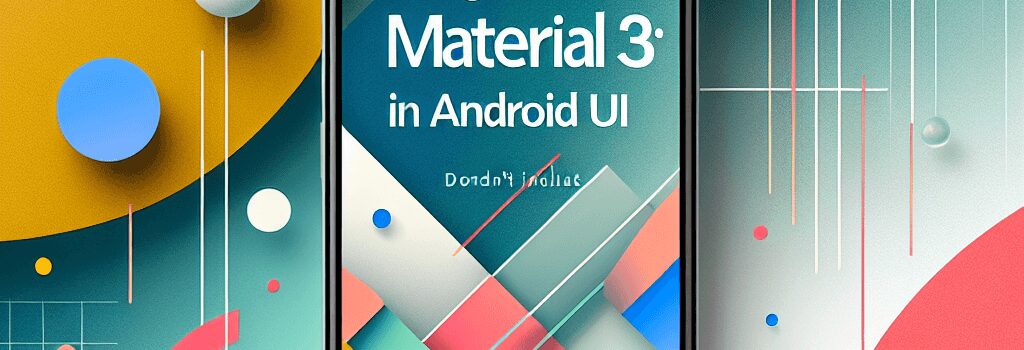Google Unveils Material 3: A Leap in Android UI

At Google I/O 2025, Google officially introduced Material 3 Expressive, the next evolution of its Android design system. Building on the adaptable theming engine of Material You, Expressive brings bolder colors, physics-driven animations, dynamic haptics and refined typography to Android 16 and beyond. While Android 16 ships this June with the familiar Material You look, a phased update rolling out later this year will deliver the full Expressive experience to Pixel phones, Pixel Watches and, eventually, the entire Google app ecosystem—Gmail, Photos, Drive and more.
Material 3 Expressive: Evolution of a Design Language
Material 3 Expressive retains the core principles of personalization and adaptability from Material You but pushes them further:
- Springy Animations: New
spring()animation specs in Jetpack Compose Material 3 v1.1.0 use physics-based damping and stiffness parameters. Transitions between UI states maintain 60fps even on mid-range SoCs by offloading interpolation to the GPU via RenderThread. - Dynamic Theming Engine: An enhanced WallpaperColors API pipeline analyzes wallpaper imagery using a convolutional neural network to extract high-contrast primary and secondary palettes. sRGB colors are interpolated linearly to minimize gamut clipping on OLED displays.
- Adaptive Shapes: MaterialShapeDrawable now supports custom corner treatments—pillowed, cut, and hybrid geometries—controlled by new shape tokens in
ShapeScheme. This allows buttons, cards and nav bars to adapt fluidly across screen sizes. - Typographic Hierarchy: Expressive introduces six new text styles. Headers leverage a 700-weight variable font for maximum legibility, while body text uses 400–500 weight interpolation to reduce eye strain on long reads.
Key Features and Technical Specifications
- Animation APIs:
AnimatedContent,updateTransition()andCrossfadeenhancements allow developers to chain animations with spring, tween and keyframe specs. - Color Tokens: Twelve core tokens map to
colorPrimary,colorSecondary,onPrimaryand more. Developers can override tokens in XML or Compose themes for precise branding. - Haptic Feedback: Tied to Vibrator.vibrate() calls in UI components, toggle switches, sliders and bottom sheets provide contextual, physics-driven haptic pulses.
- Iconography: Status-bar and quick-settings icons adopt a 24×24dp baseline with a new 2dp stroke, improving readability on high-dpi screens.
Performance and Battery Implications
Google’s internal benchmarks on the Pixel 8 Pro running Android 16 Beta 3 report that Expressive’s advanced animations incur less than a 3% increase in GPU utilization. By leveraging Choreographer.postFrameCallback() and Vulkan GPU drivers for color blending, most UI transitions remain within the 16ms frame budget. Early power measurements indicate a sub-1% annualized battery impact for average users, thanks to aggressive batching and render culling in SurfaceFlinger.
Developer Adoption and Tooling
Jetpack Compose Material 3 v1.1.0, available in the Android Studio Giraffe Canary channel, includes new Material3Theme extensions, design tokens and preview parameters. Google has released a Material 3 Expressive Figma UI Kit with ready-made components and animation keyframes. Additionally, new lint checks validate color contrast ratios (AA and AAA) and enforce minimum touch target sizes of 48×48dp.
OEM Integration and Market Outlook
As an open framework under the Apache 2.0 license, Material 3 Expressive is available for all OEMs and custom ROM projects. Samsung’s One UI 6.1 beta hints at partial support for the dynamic color engine, though full Expressive animations remain absent in early builds. OnePlus, Vivo and Xiaomi have yet to publicly commit to the new design tokens. Independent developers have already released experimental Expressive themes for Lawnchair 13 and Niagara Launcher.
Expert Commentary
“Material 3 Expressive is a significant step toward a more playful, yet coherent, Android experience,” says Tim Willis, a UX engineer on the Android System UI team at Google. “By baking physics-based springs directly into our animation APIs, we’ve managed to strike a balance between visual delight and system performance.”
UX consultant Dr. Maria Sanchez of the Interaction Lab at Stanford University adds, “The improved typographic hierarchy and contrast will greatly aid users with low vision. Google’s emphasis on token-driven theming sets a new bar for accessibility in mobile OS design.”
Future Roadmap and Conclusion
Material 3 Expressive will begin rolling out to Pixel 8 series and Pixel Watch 3 devices in Q3 2025. Google has announced Wear OS 4.5 support and plans to extend Expressive to Chrome OS and select Google Workspace web apps by early 2026. With its open-source Figma kits, Compose libraries and animation specs, Material 3 Expressive is poised to reshape Android’s visual identity across devices and form factors.